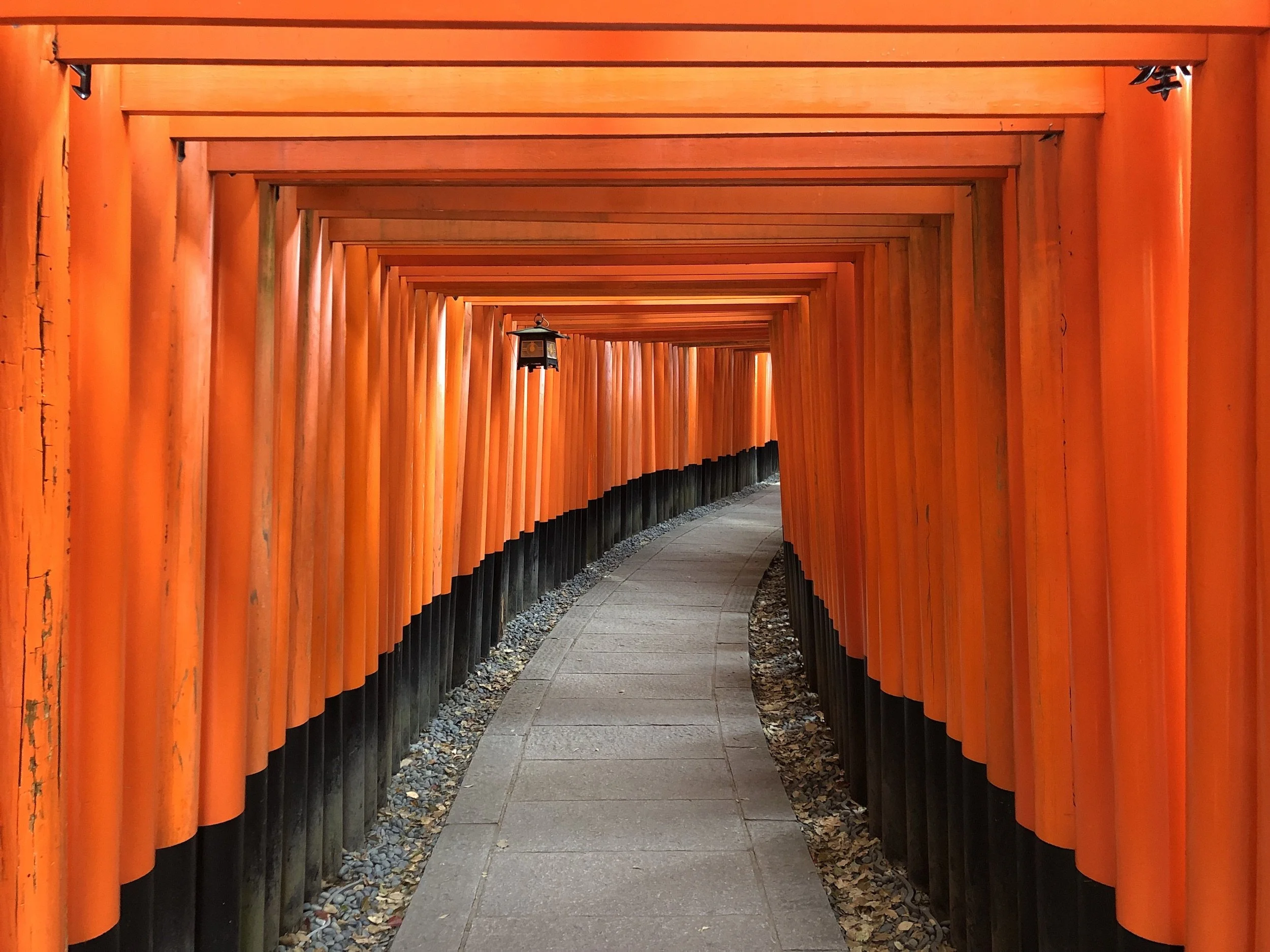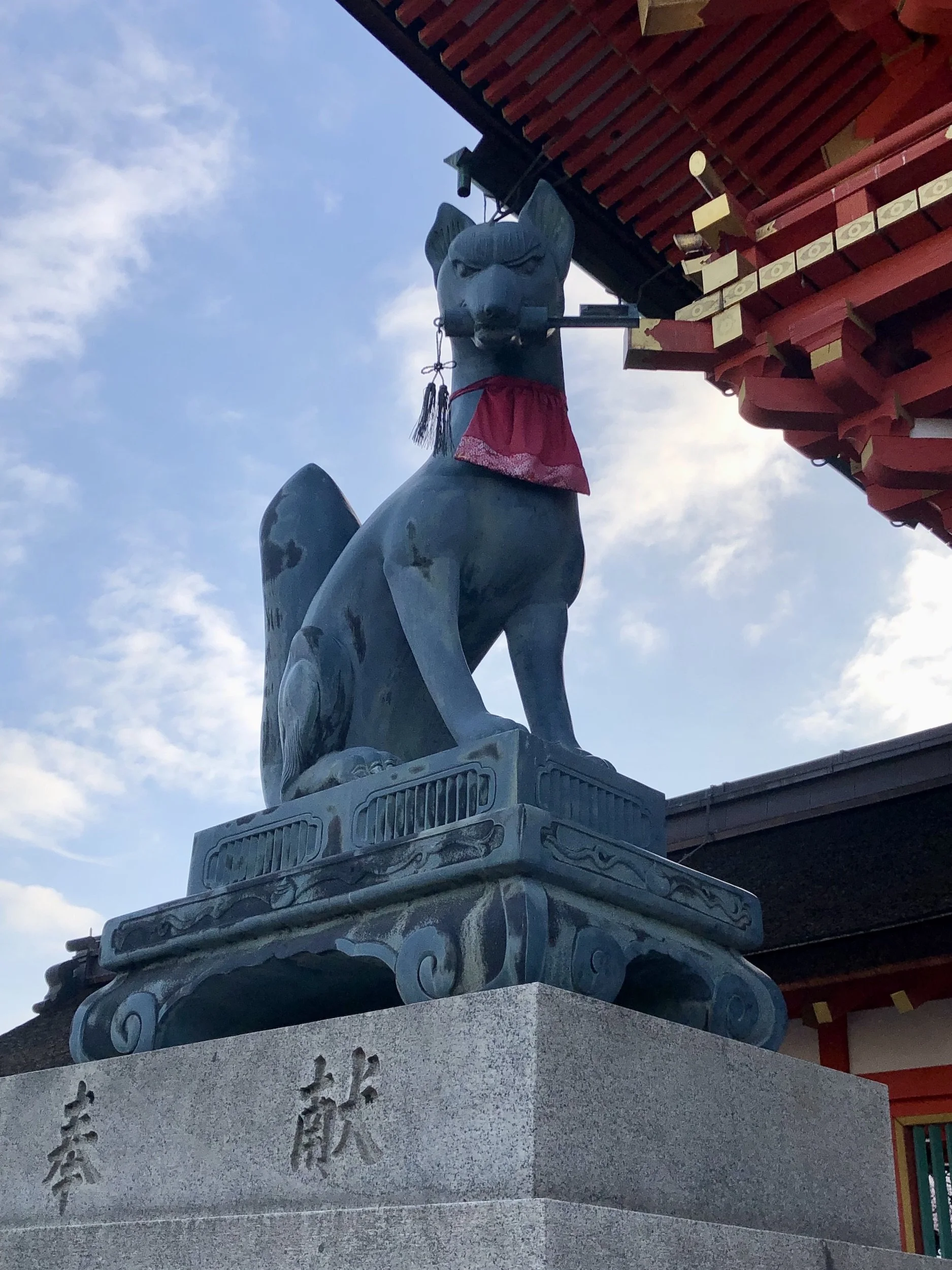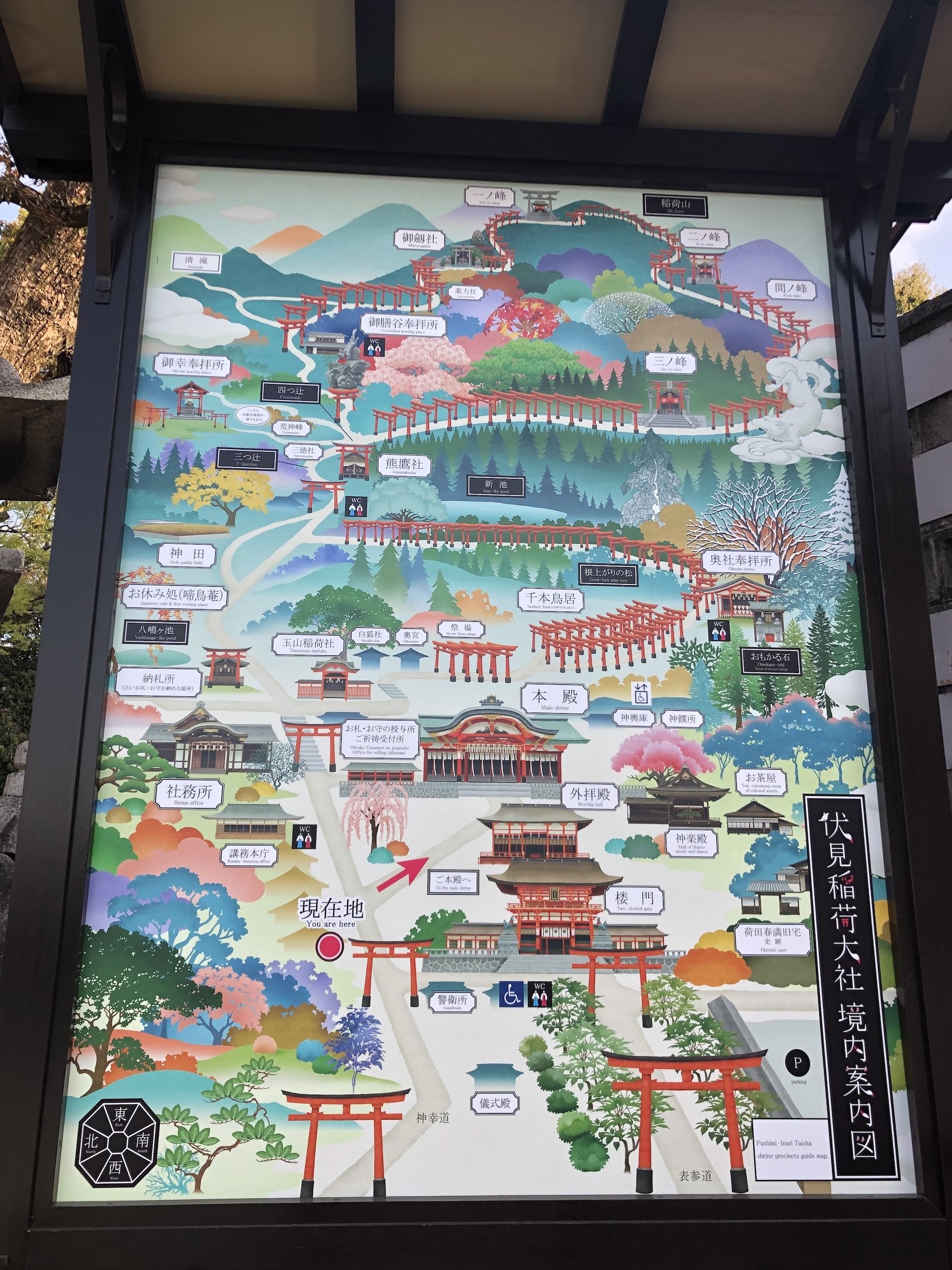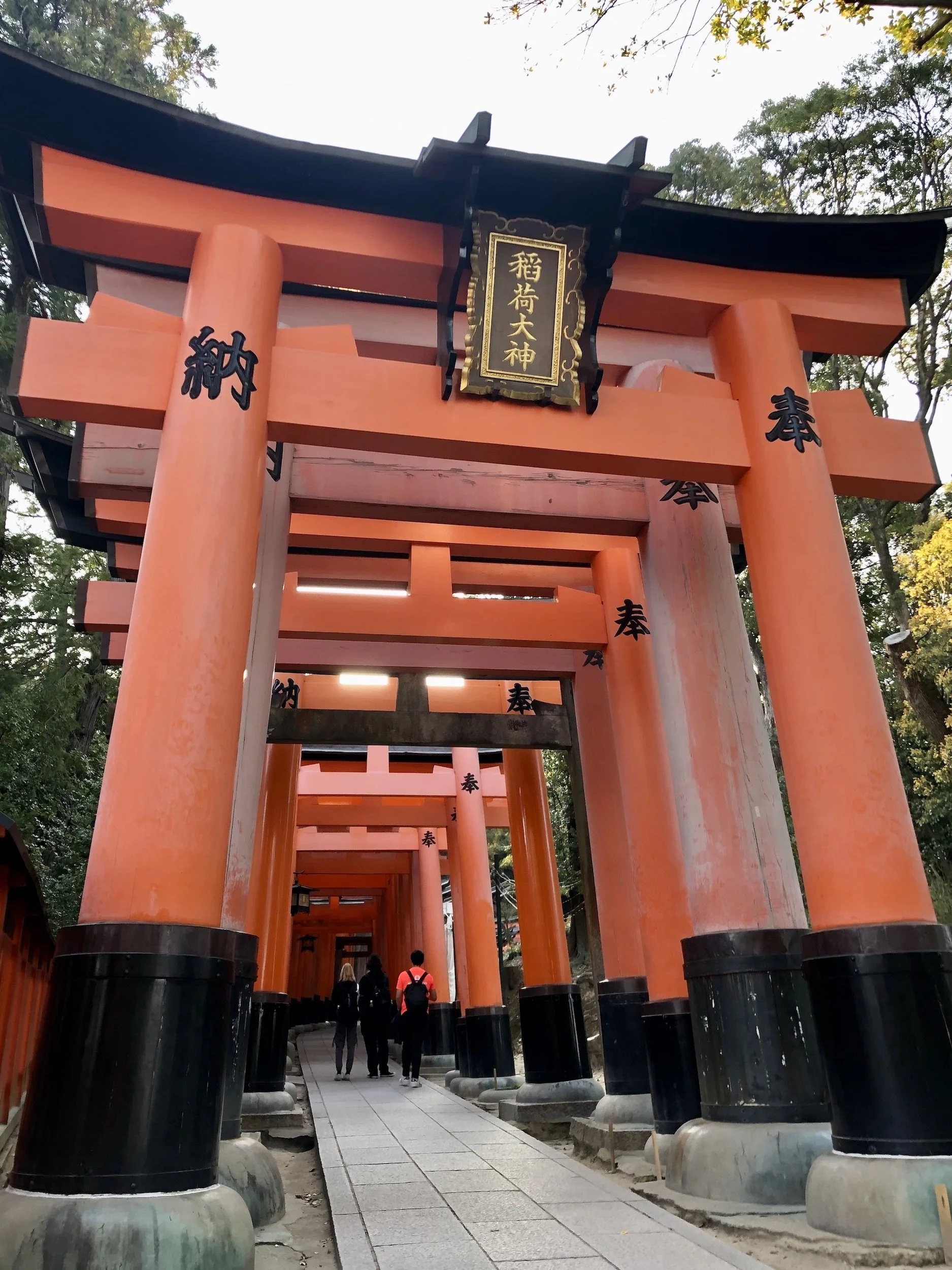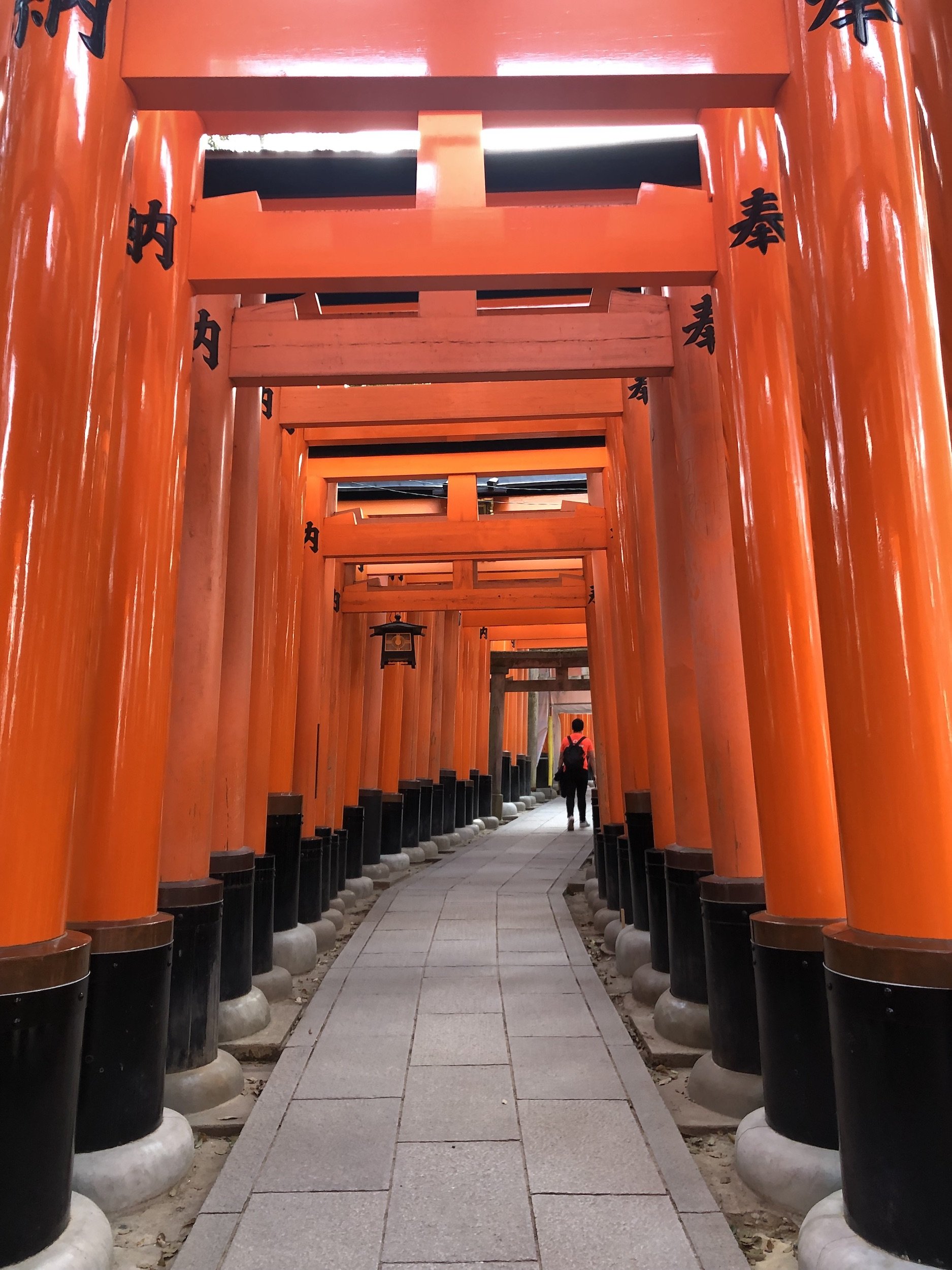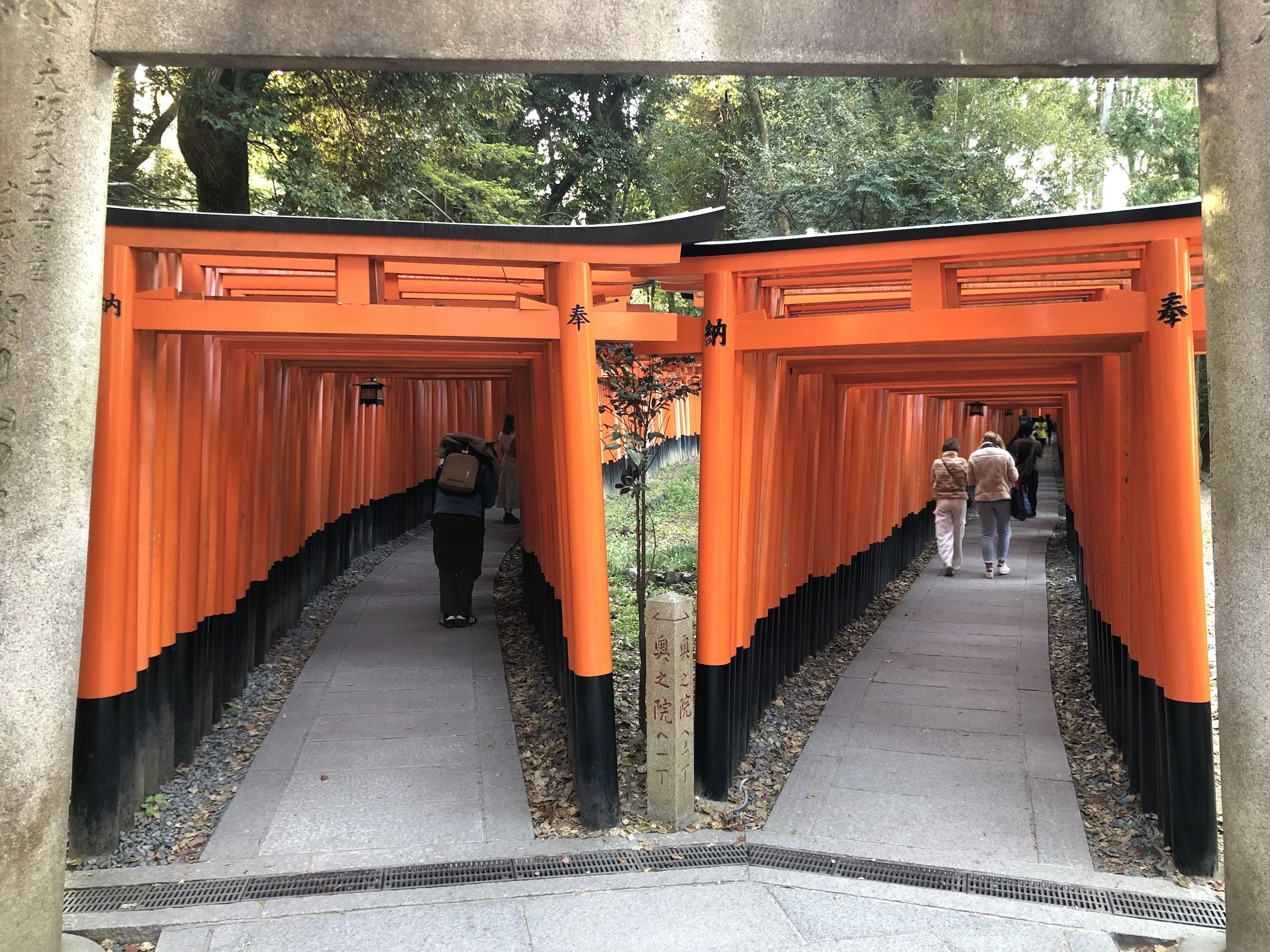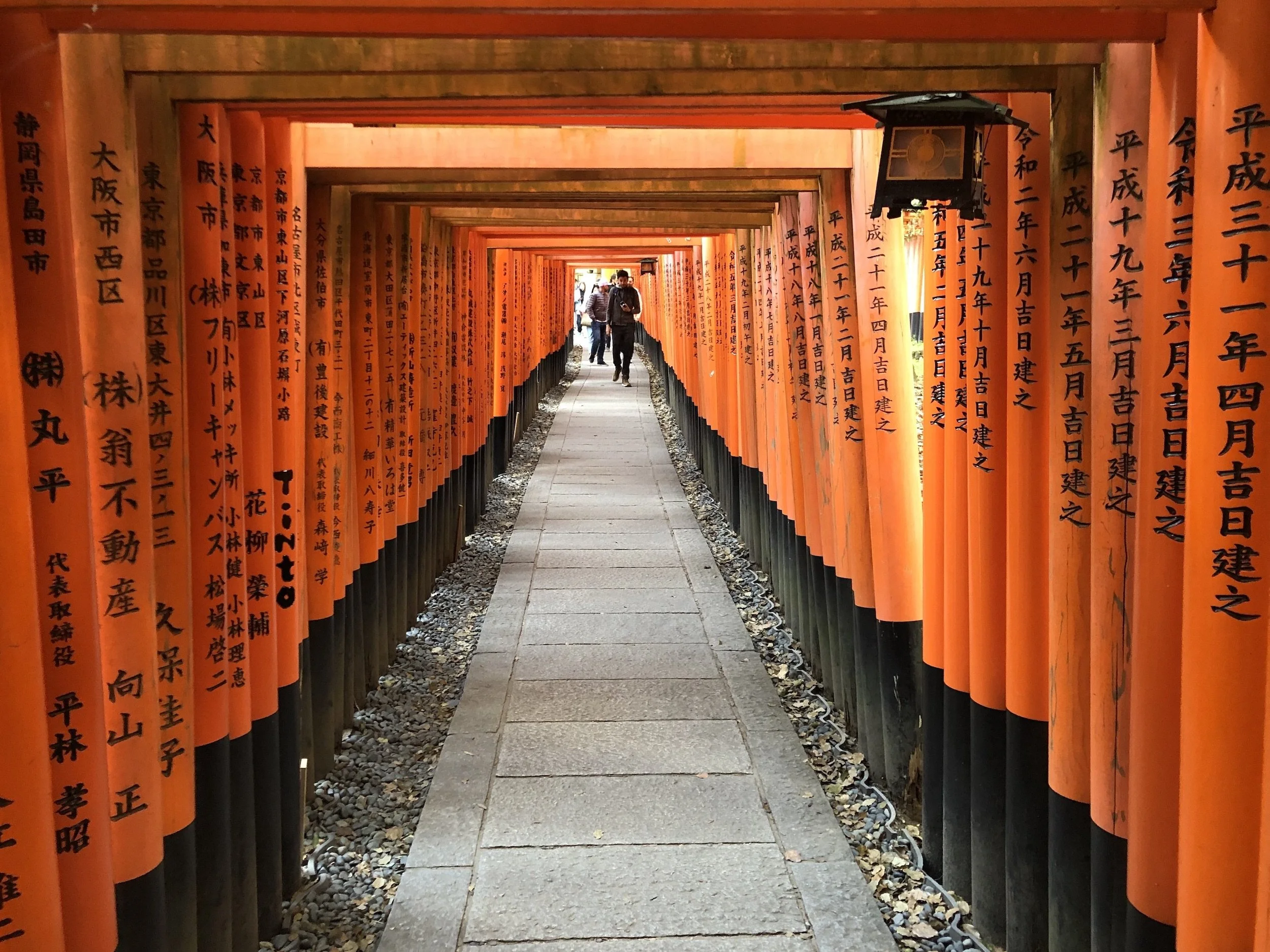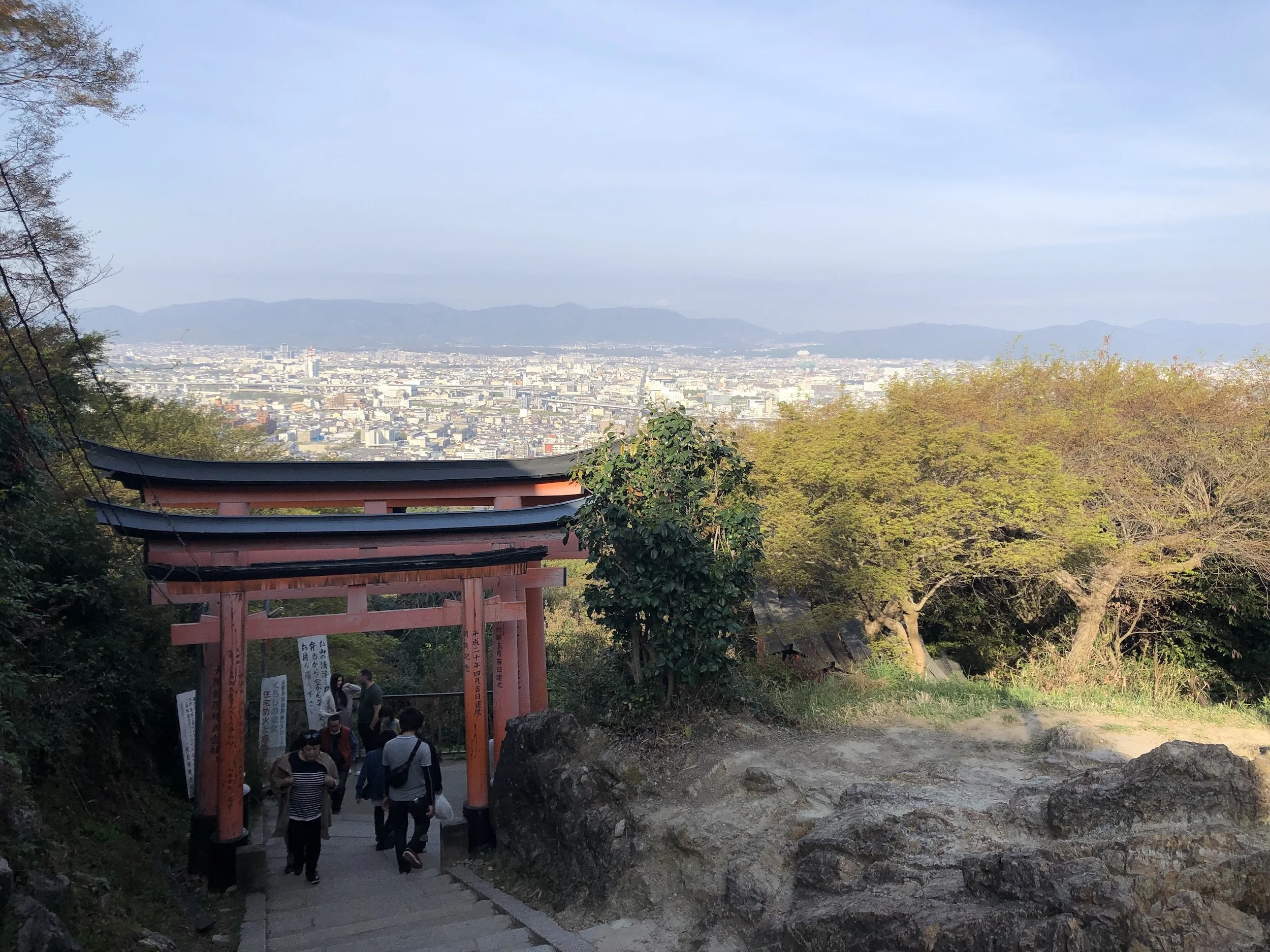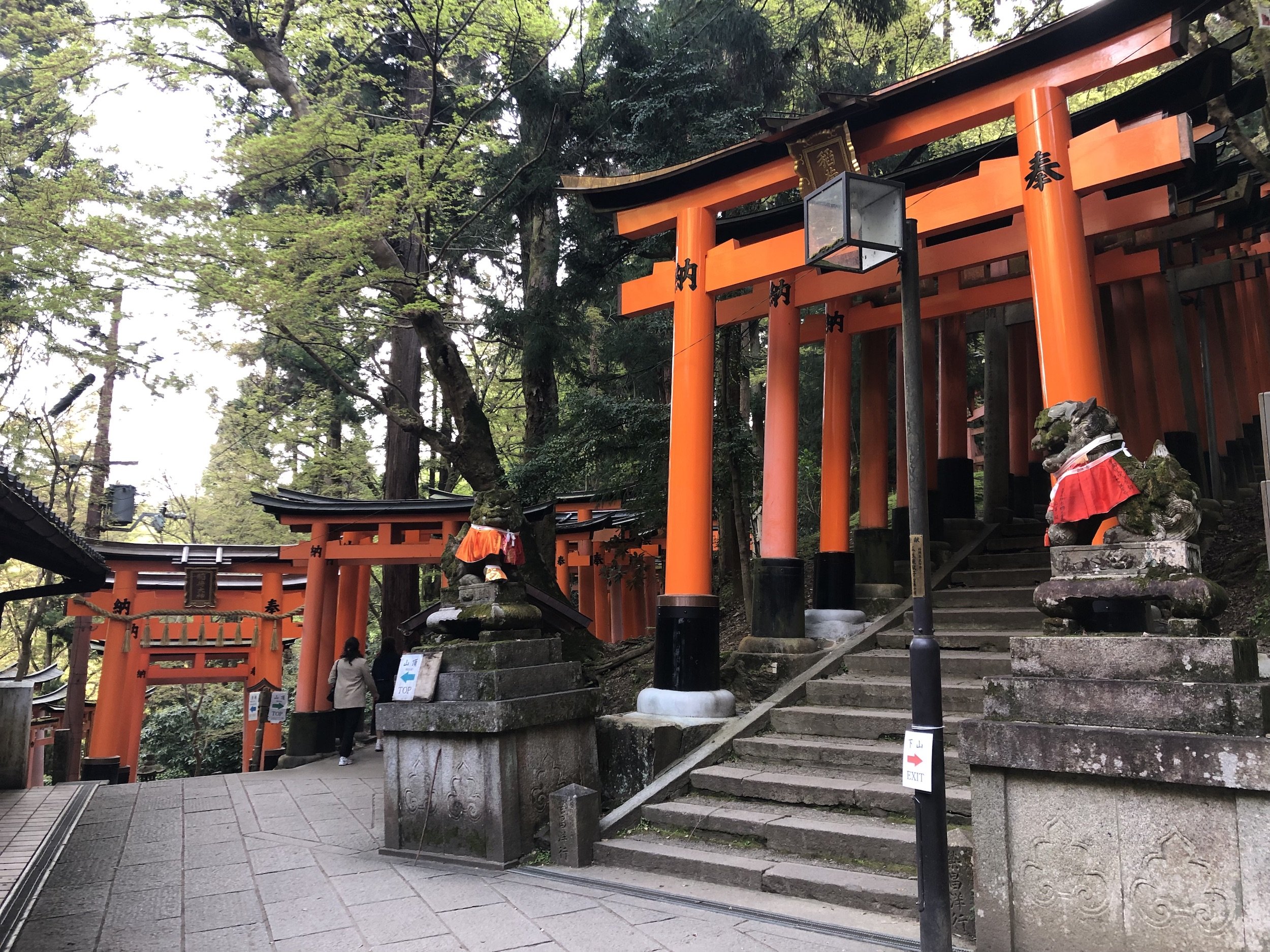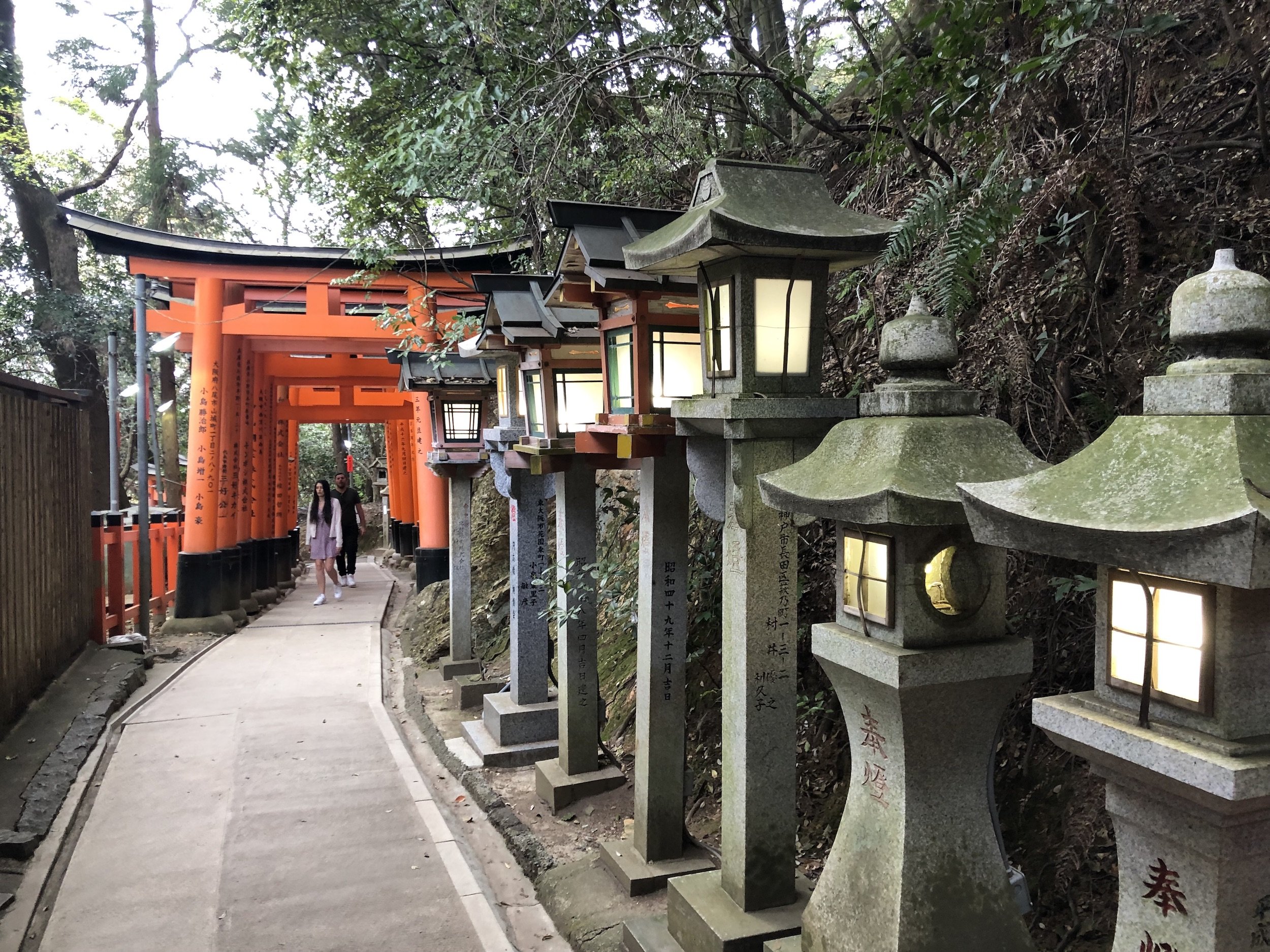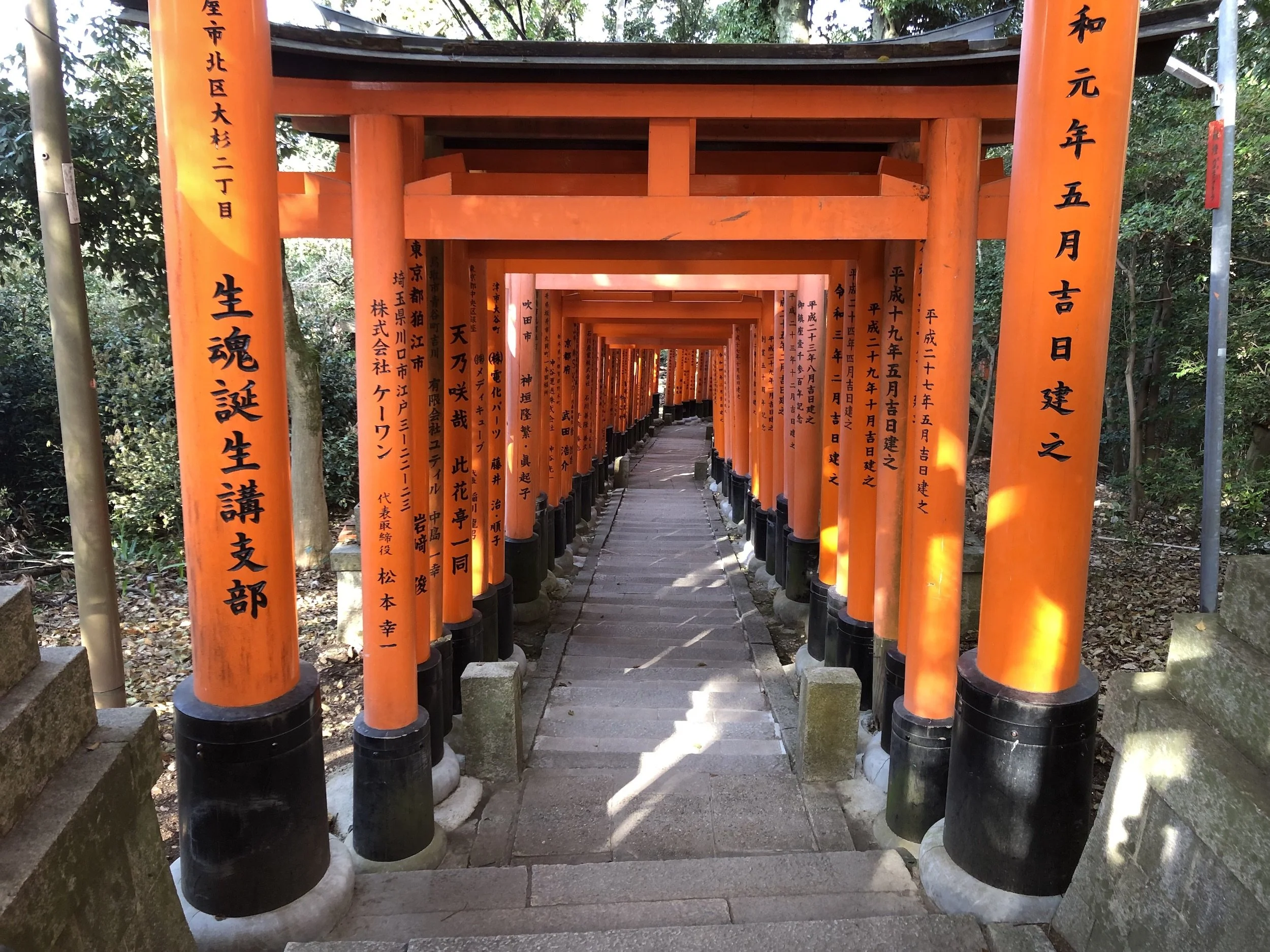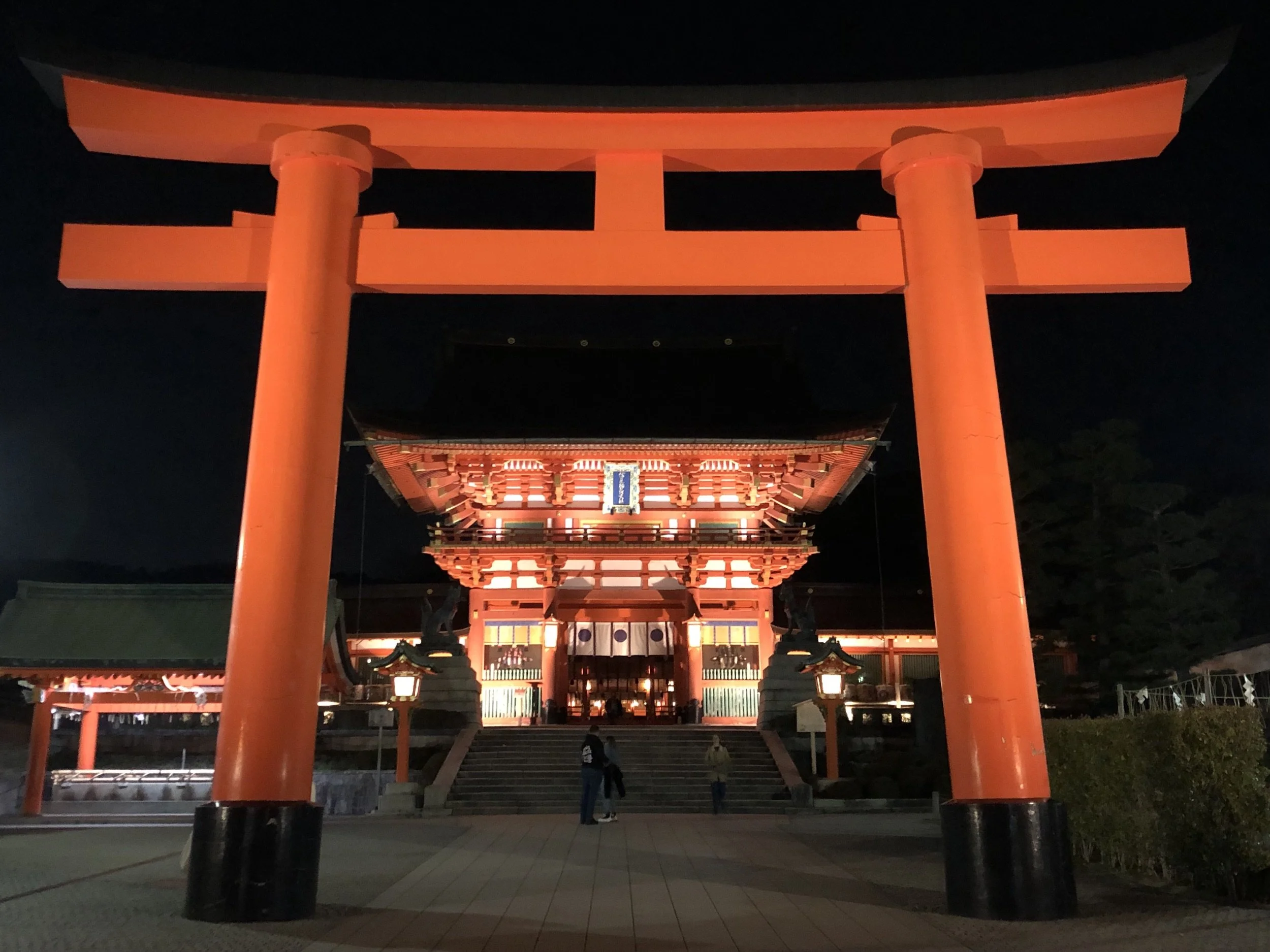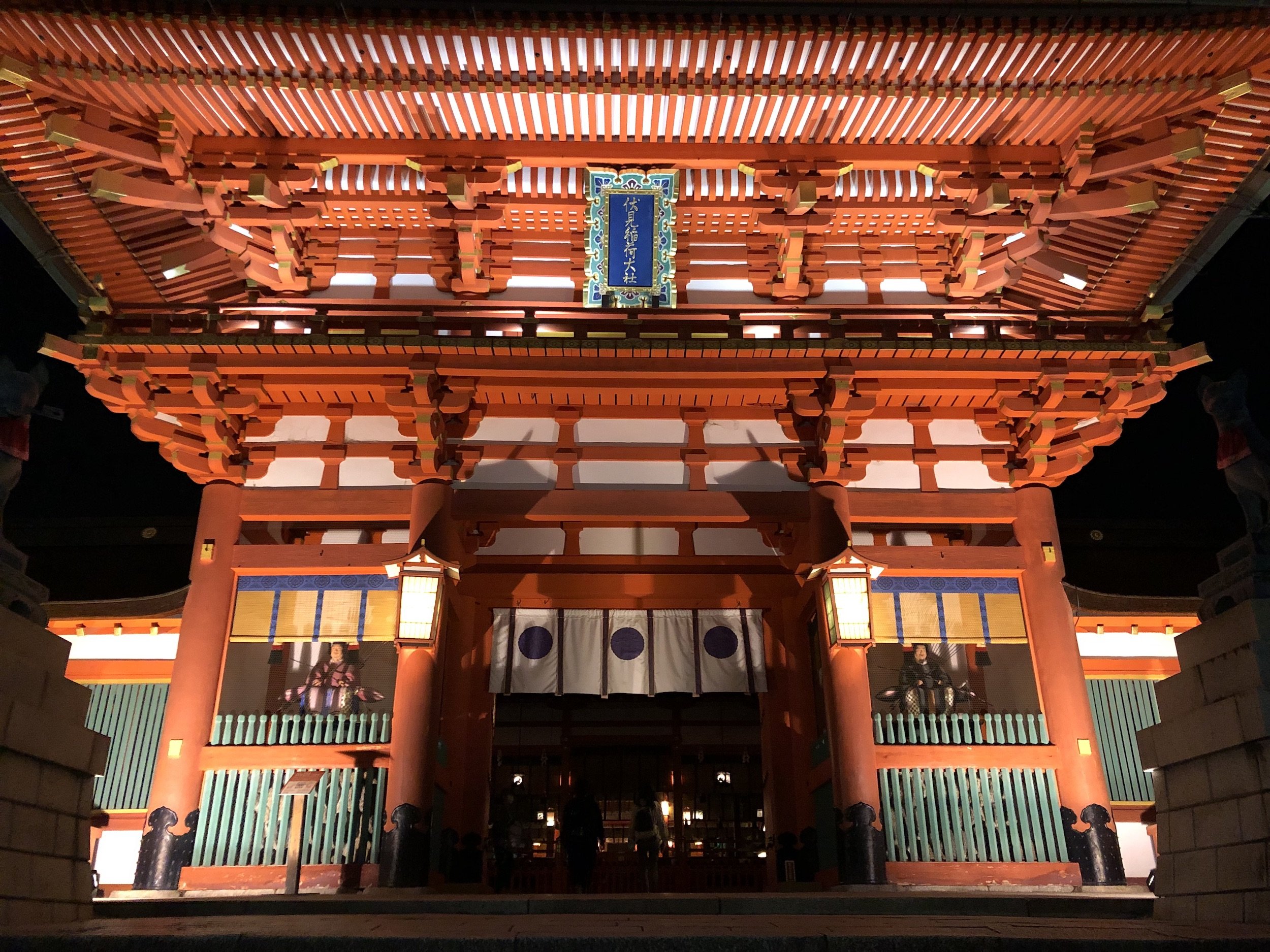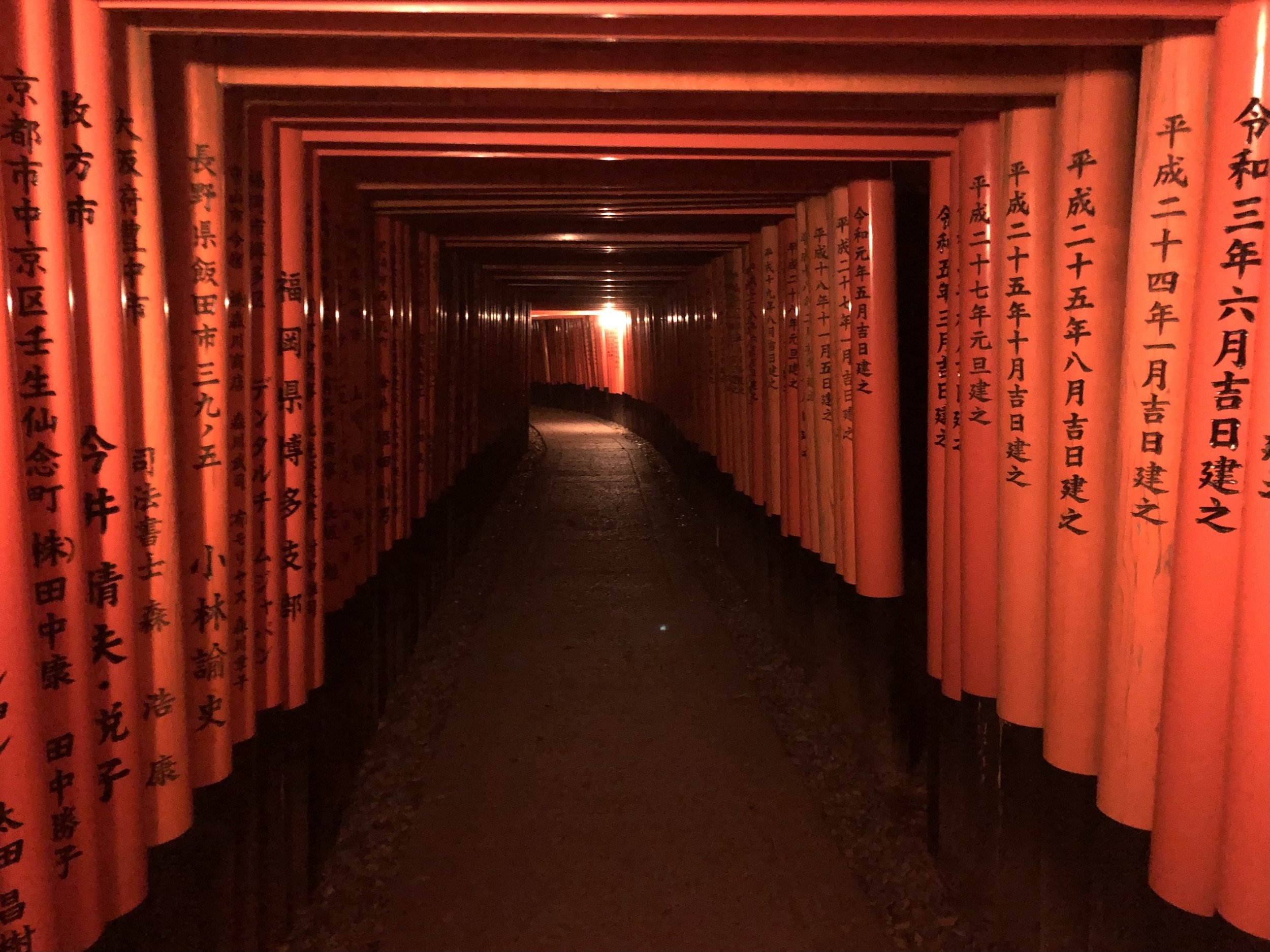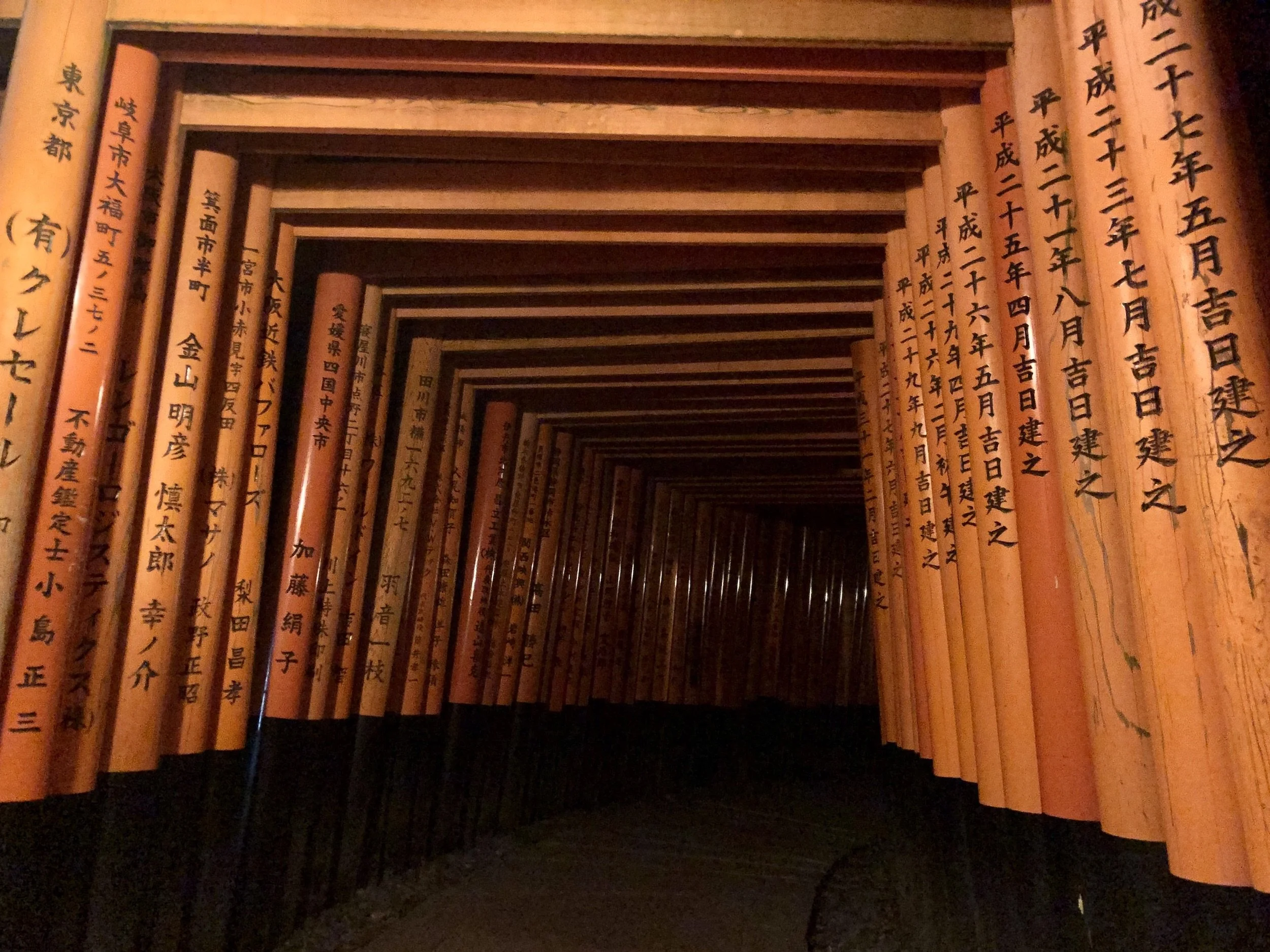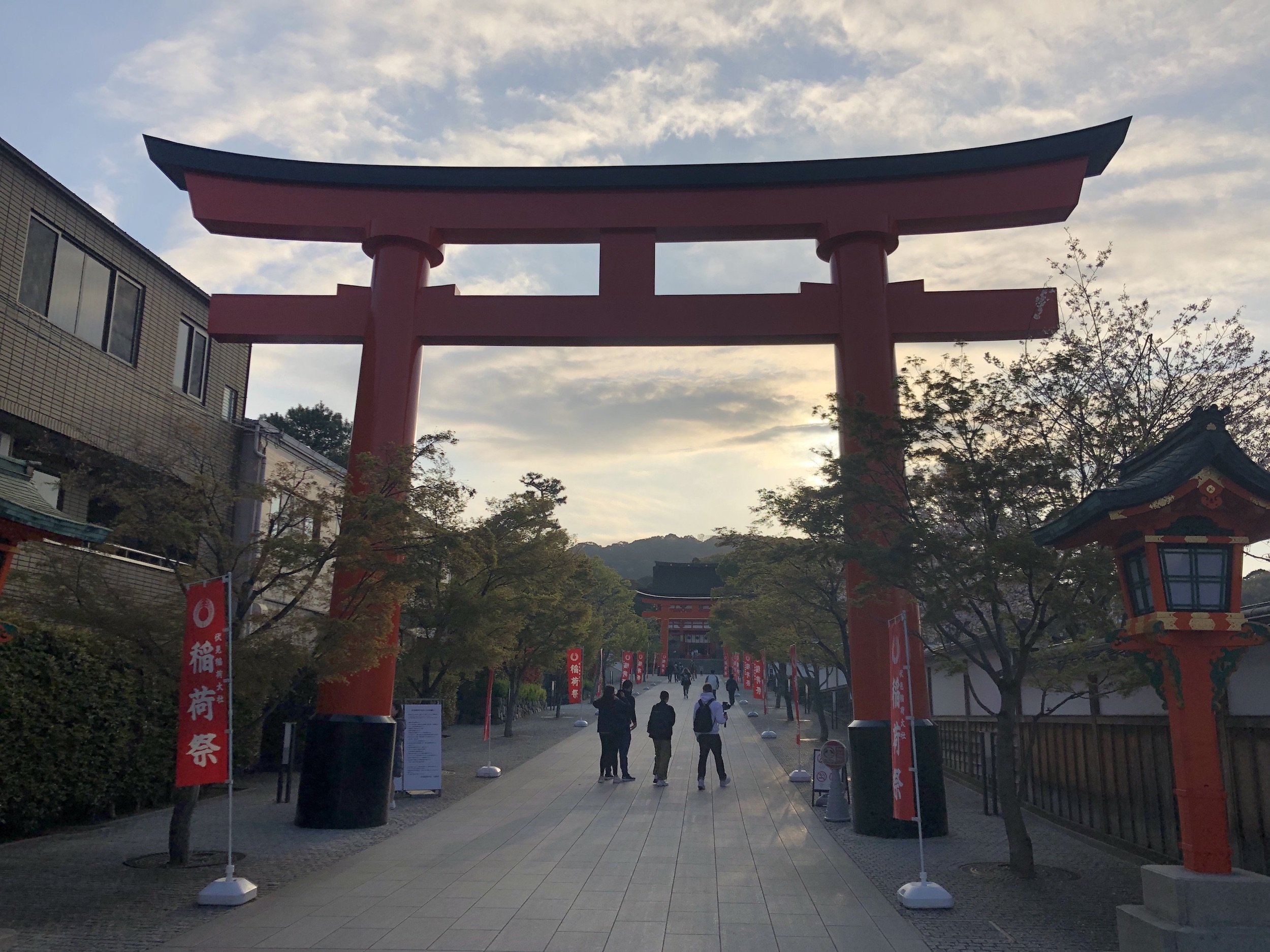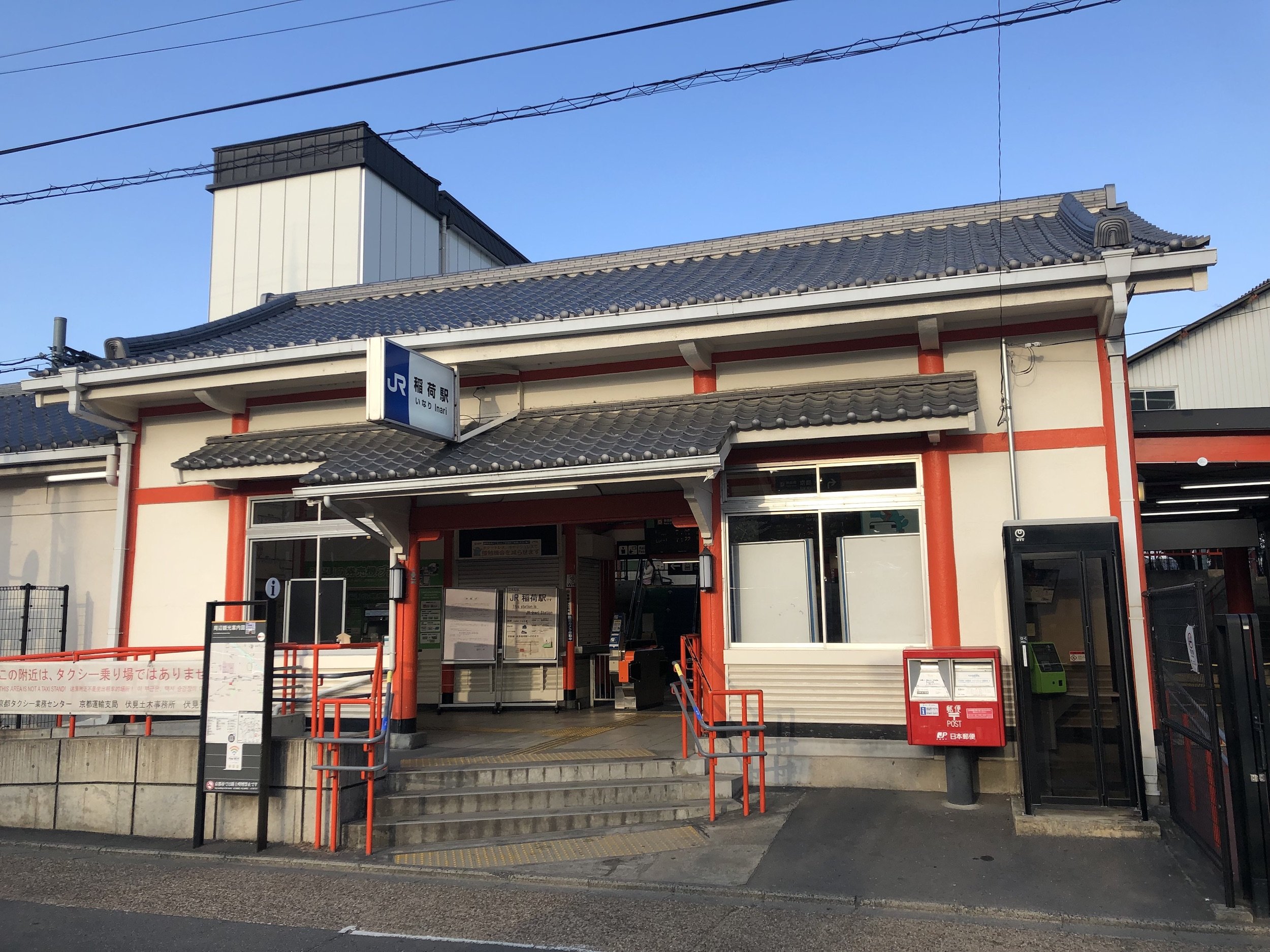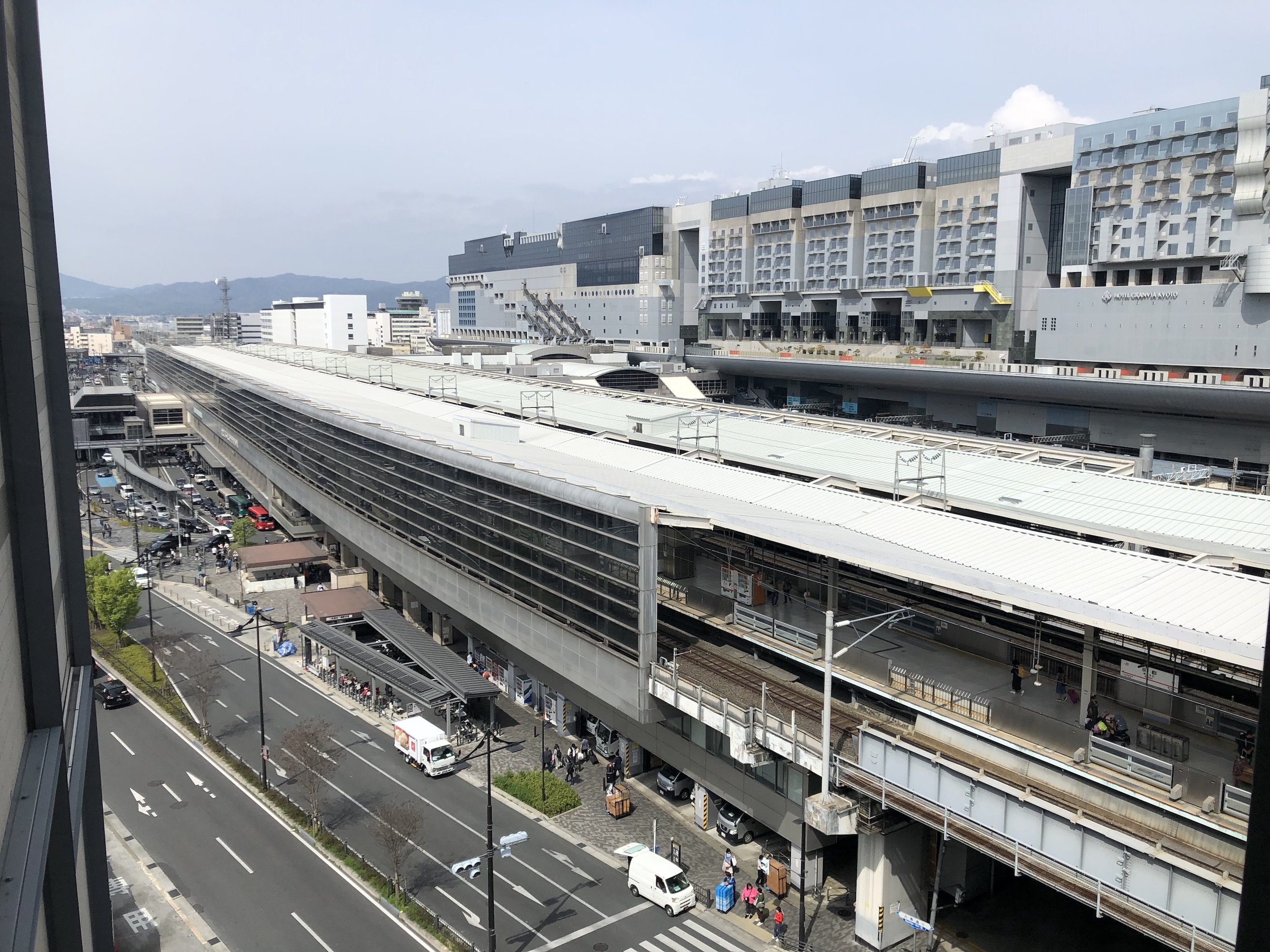Kyoto’s Fushimi Inari Shrine gets quite crowded during the day; everyone and their grandmother wants to be the lone figure pictured in its tunnel of vermillion torii gates, as seen in the film Memoirs of a Geisha. The shrine's official website notes, "The whole of Inariyama, the mountain where Fushimi Inari Taisha rests, is considered a precinct of the shrine." This means that if you really want to get the full experience, you’ll be ready to climb the 764-foot mountain from top to bottom.
Here, we’ll review a few tips and tricks for doing that. I’ll also talk a bit about the shrine’s importance relative to Kyoto’s history and thousands of other sub-shrines across Japan.
Fushimi Inari Shrine existed even before Kyoto became Japan’s “thousand-year capital” from 794 to 1868. The shrine was established in 711, an easy year to remember if only because Japan has the most 7-Elevens in the world.
No, seriously. There are over 20,000 of them here, so you’re likely to encounter that number in convenience store signs again and again. Yet there are even more bunsha (sub-shrines) of Fushimi Inari across the country, with Taisha flagging this one as the head of them all.
The shrine is dedicated to the rice god Inari, whose fox messengers are represented in statues throughout. The most well-known part of it is its Senbon ("Thousand") Torii gateways. In these two tunnels, the torii gates are spaced closer together in a picturesque way, so as tourists arrive by the busload, this is where you’ll get a bottleneck of people snapping photos.
The trail up the mountain, however, continues long past the Senbon Torii. Along the way, you’ll encounter the site of several former shrines and many other torii gate tunnels.
Best Time to Visit: Night or Early Morning
The first time I visited Fushimi Inari Shrine was over winter break back in 2010. I was with a friend and it started raining, so we gave up on climbing the whole mountain and turned back.
One thing I would recommend now for visiting the shrine is to get there around sunrise or a little after. On our four-day spring cherry blossom viewing trip to Kyoto this year, I visited Fushimi Inari twice: once at night on our first day, and then again in the early morning on our last day, when Azusa and I did the full mountain climb together. It took us about two hours, and by the time we got back down to the bottom (around 9 a.m.), the shrine grounds were already much more crowded than they had been when we came in.
At night, lanterns light the path, though it’s still dark and could be considered spooky or peaceful depending on your imagination or mood. I didn’t go past the Senbon Torii at night, so I’m not sure how treacherous the path would be under low lighting. Either way, though, Fushimi Inari Shrine is open 24 hours, and it’s free to enter.
Fushimi Inari Shrine Access (Plus, Train vs. Bus in Kyoto)
The entrance to Fushimi Inari Shrine is right across from Inari Station, which has a design similar to the shrine’s. It’s only two stops away from Kyoto Station on the Nara Line. If you’re staying at a hotel near Kyoto Station (which I’d also recommend, just for the sake of getting around town), it’s easy to hop on the train in the morning and be at Inari Station in just five minutes.
This makes Fushimi Inari Shrine another good sightseeing option if you want to avoid Kyoto’s overcrowded city buses. I’ve discussed this in past posts and even mentioned it in photo galleries, but the buses are often jam-packed, with local residents forced to ride the same busy routes as tourists.
As SoraNews24 reported earlier this year, the line for the bus to Kiyomizu-dera Temple, for example, can be so long in the morning that you might have to wait for the third or fourth bus before you can even board. It’s become enough of a problem that Kyoto is now set to discontinue sales of its tourist-friendly one-day bus pass this September (and stop accepting them altogether after March 2024).
All the more reason to just take the train to Inari Station, which will drop you off right on Fushimi Inari Shrine’s doorstep. For this spring trip, we stayed at the impressively named Daiwa Roynet Hotel Kyoto-Terrace-Hachijo Premier, which was conveniently situated near the Nara Line entrance, toward the back corner of Kyoto Station on its south side. But there are any number of hotels that you can find in and around the station, and again, it’s just a five-minute ride from there to Inari Station.
If you found anything in this post useful, you can support more like it (and let me know you’re out there) by hitting me up on Twitter @TheGaijinGhost.

